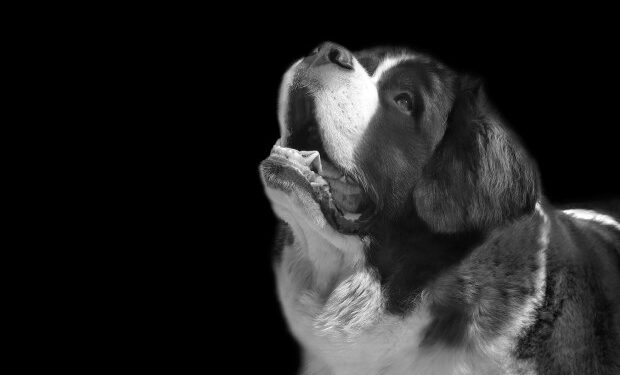Everybody likes a happy ending, at least once in a while. So you will be pleased to hear that Katherine Carver’s book on abandoned dogs is full of happy endings — that is, lots of adoptions.
Most of the dogs she photographed and profiled found new homes.
But Carver’s book, “Abandoned: Chronicling the Journeys of Once-Forsaken Dogs,” is not all warm and fuzzy. It acknowledges a big problem up front — millions of abandoned dogs across the country, too few adoptions, not enough room in shelters and more euthanasia than you want to think about. In fact, four of the 60 dogs featured in Carver’s book — Minnie, Millie, Maggie and Charlie — were euthanized. Three of them were considered too aggressive and one had become old, sick and blind while waiting nearly 1,300 days to be adopted.
So Carver does not skirt around the hard realities. In fact, it’s one of the main points of “Abandoned,” scheduled for release in October by Lantern Publishing.
Another purpose is to highlight the variety of dogs available for adoption — “It’s not just pit bulls that are needing homes,” the author says — and the good work of rescues and shelters. (A list of them appears at the end of the book, and Carver says a portion of her royalties will go to SPCA International.)
A government attorney who lives in Howard County, Carver embarked on her photographic project more than a decade ago. It was the adoption of her own dog, Biscuit, from a Shetland Sheepdog rescue, that sparked her curiosity about dogs that people abandon or give up.
“I wanted to learn how these animals came to live in shelters and rescue organizations,” Carver says, “to discover what actually happens to them, to raise awareness of both their plight and their potential to live happy lives and to enrich the lives of their adopters.”
So, she contacted shelters and rescues in the Mid-Atlantic.
I asked if she started with happy endings — dogs already thriving in new homes — and worked backwards.
“I did not start with any endings,” she says. “When I first photographed the dogs, while they resided in a shelter or rescue, I did not know how the story would end until I was told whether the dog was adopted or euthanized. If the dog was adopted, I was given contact information for each adopter to see if I could photograph their dog a second time.”
The interval between the first photo and the second was roughly a year. The result is a before-and-after book, with each dog named, described by breed and age, its predicament explained and length of homelessness listed. Some dogs were sheltered only a few weeks, others several months, even years. Most of the dogs were renamed by their adopters.
“I had no idea how this would all unfold,” Carver says. “However, in the end, the overwhelming majority of dogs have happy endings. They were adopted and went on to live wonderful lives.”
In the photographs, the dogs appear against a black background, something unexpected in canine portraiture. Some dogs seem happier in their “after” photo than in their “before” shot, but some of that observation is likely due to projection on my part.
I asked Carver about extreme cases — that is, dogs that went from the most distressing circumstances to new homes.
She pointed to a female Saint Bernard that arrived at a Maryland shelter from Missouri in 2014 when it was five years old. The dog, originally named Darjeerling, had been living in filthy conditions with five other dogs in an outdoor pen. She received treatment for heartworm after arriving in Maryland. Darjeeling was adopted after 210 days by a cancer patient who found the big dog great company during treatments. She was renamed Honey and “goes to the spa each month for a bath along with [a] manicure and pedicure.”
Humphrey, on page 150 of Carver’s 272-page book, is a Flat-Coated Retriever mix that showed up in a Maryland rescue as a mange-riddled pup from West Virginia. He’s blossomed in a new home, and his adopter renamed him Ricky-Bobby. “No matter how tough of a day I have had,” the book quotes the dog’s owner, “he always greets me at the door with a smile and a playful romp around the house, and it always puts a smile on my face.”
Dreifuss, a Labrador Retriever mix, arrived at a Maryland shelter after being rescued from the cruel conditions of a dog hoarding case in Tennessee. He was missing his left front leg. After 242 days in a rescue, he was adopted and got a new spelling of his name, Dreyfuss.
“He’s still living,” says Carver. “The adopter, a doctor, had heard that so many people had passed on him as a special needs dog. But despite his missing a leg, he’s just changed her life. He’s just been a very wonderful companion. Just because he looked different didn’t mean he couldn’t have a wonderful life.”
Props to Carver for this project. My family has always adopted dogs from shelters and rescues, the most recent being Annie, a golden retriever who came to us through Wings of Love, Kuwait, a Baltimore-based nonprofit. Annie is a sweet girl, though, after four years, she’s still wary of me. Her love is strictly conditional — I have to be horizontal or sitting down and have a treat in my hands. So, I try to meet her conditions. I take what I can get.

Courtesy of Katherine Carver
Honey, a Saint Bernard, is among 60 once-homeless dogs featured in Katherine Carver’s book of photographs and stories.





